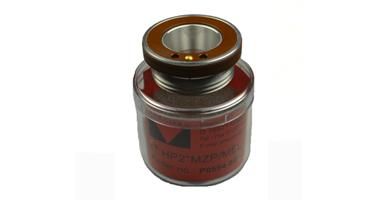Medical equipment, devices, and tools are the most important assets for any hospital. As each one of them has a specific purpose, bifurcating and marking them with the correct data is also critical.
Apart from identifying their use, it is important to label them according to their use. Additionally, it helps the service team perform the maintenance activities, helps the procurement team to procure the right equipment and many more. To mark the equipment, out of all the available methods, Laser marking can be the best way as it does not affect its chemical state.

Let’s understand why laser marking is essential:
In 2013, the Food and Drug Association (FDA) made marking of the medical equipment compulsory. The major reason behind this was to identify and trace the equipment. They also require marks like logos, alphanumeric, codes, etc. to be clear and readable.
They even added that all medical equipment should have a Unique Device Identification (UDI). This UDI consists of the manufacturer's name, make or model of the product, expiry date or other attributes if any.
Further, the government also issues guidelines on marking equipment with unique identifiers. This means these marks are compulsory for all medical equipment from tiny devices like implants to large equipment.
How to Laser Mark
You can easily do it on the selected area especially on prepared plastic surfaces, metallic or delicate materials like foil or laminate. Unlike other labeling methods, laser marking does not involve direct contact. Consisting of different laser parts like Trumpf nozzlesand Precitec nozzle, here are its major types:
1. Foaming:
This type of laser marking melts the material and is often done on the dark plastics. After the process, the marked area becomes lighter than the rest of the material.
2. Engraving:
This popular way for laser marking melts, evaporates, leaves the impression of design, logo, numbers, and text.
3. Carbonizing:
Carbonizing is useful in wooden or leather surfaces. It leaves a dark mark after the use.
4. Staining:
This type of laser cutting machine causes the heat effect and changes the color of the marked parts the same way when something burns.
5. Annealing:
After exposure to the laser beams, the surface of the material undergoes oxidation and changes because of the heat. This method is useful when working with metal materials.
6. Removing:
To get rid of the topcoat of the material this marking method can be the solution. One can perform this type of marking preferably on laminates, foils, coated metals or aluminum.
Benefits of Laser Marking Medical Equipment:
- It becomes easy to track the devices in cases of malfunctions, emergencies, maintenance, etc.
- Laser marking helps in protecting the trademark of medical equipment and devices. In turn, facilities, hospitals, and pharmacies can easily tell if they are original or not.
- These markings make it easy for users to identify manufacturers and find details of particular medical equipment.
- As it is a non-contact form of labeling, laser marking leaves the delicate parts of the equipment untouched.
- With laser marking, it becomes easy to trace the manufacturer.
- Laser marking guarantees precise results. It means that you can mark all medical equipment, tools, and devices with the same sign at the same spot.
- Manufacturers can trace their products and get data on their performance to know they are performing well or having any defect.
Conclusion:
Overall, laser marking uses laser beams to label equipment, tools, devices, parts, and materials. As this method is durable, the mark never wears out. It withstands chemicals, moisture, heat, and other harsh conditions that can ruin the other kind of labeling. To smartly brand your medical equipment, one should adopt this technology. You can easily find the laser engraving machines online or its parts like Trumpf nozzles and Precitec nozzle if you already have invested in a machine to get started.

 Log in with Facebook
Log in with Facebook 








